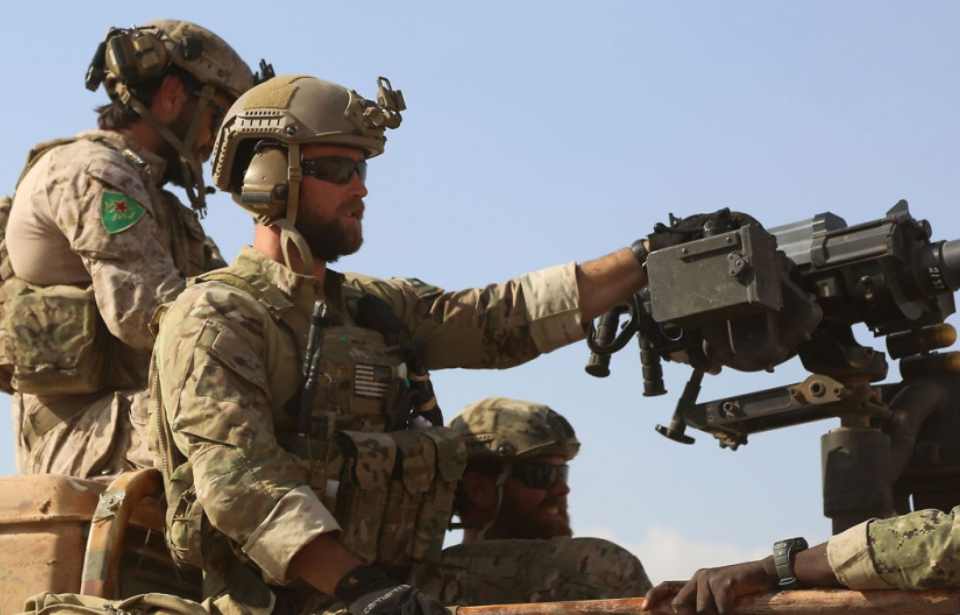The Mk 47 or Striker 40 – often called the Mk 47 Striker – is an American 40 mm advanced automatic grenade launcher. It was developed as the successor to the Vietnam- and Gulf War-era Mk 19, with the company behind the weapon, General Dynamics, describing it as the “first major advancement in crew-served weapon systems since the end of World War II.”
Mk 19 grenade launcher
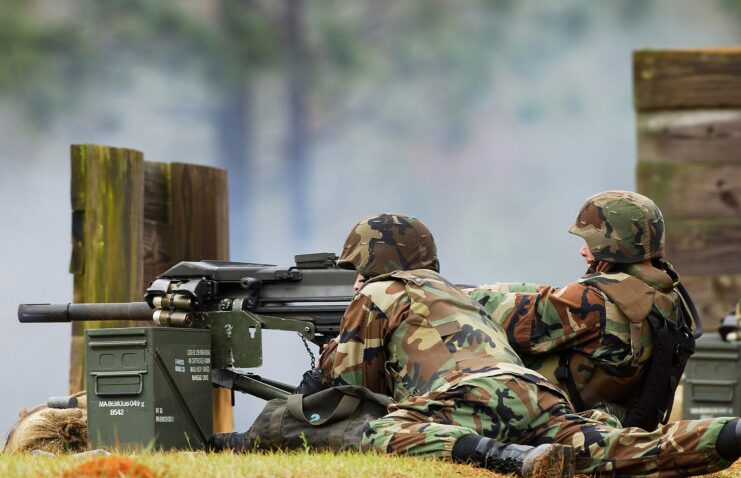
The Mk 19 is a 40 mm belt-fed automatic grenade launcher that was designed during the Vietnam War. While most effective at 1,500 meters, it can launch munitions as far as 2,212 meters at 360-390 rounds per minute. It’s a powerful weapon, albeit with the ability to reveal its operator’s position at night, due to its flash.
The Mk 19 entered service with the US Army in 1968, and while its use has been reduced over the decades, it remains equipped to this day. Despite its longevity, the decision was made to create a more-advanced automatic grenade launcher that could make use of modern technology, with the primary objective being to provide accurate and rapid-fire support at extended ranges.
Development of the Mk 47 Striker
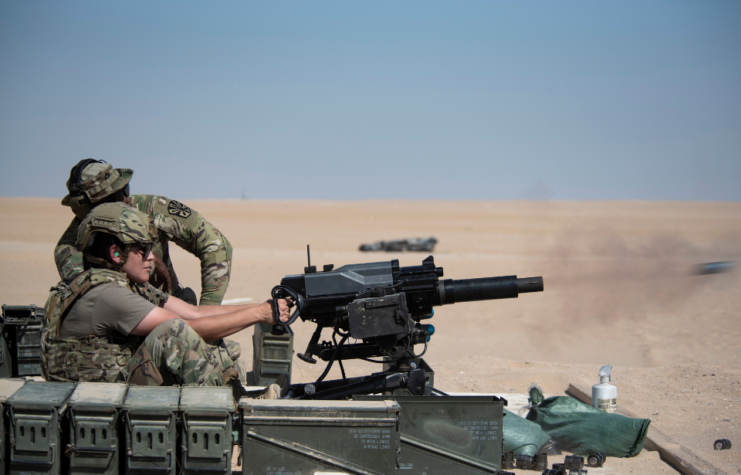
In July 2006, General Dynamics was awarded a $23 million five-year Indefinite Delivery Indefinite Quantity contract to produce the Mk 47 Striker, with the potential value topping $82 million. Two and a half years later, the company was awarded yet another contract, this time worth $12 million, to further the grenade launcher’s production and development.
Production would take place at General Dynamics’ facility in Saco, Maine, and the company teamed up with Raytheon to manufacture the weapon’s sight. The Mk 47 combined firepower and versatility with cutting-edge technology, producing a formidable tool.
Mk 47 Striker specs
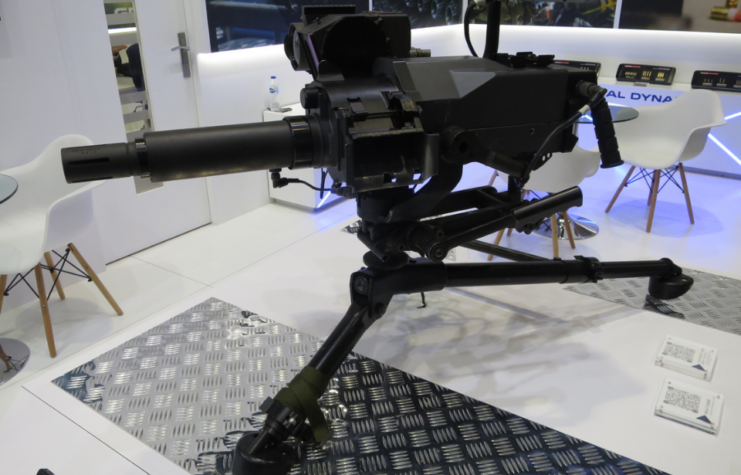
The Mk 47 Striker features a compact and lightweight design. Its overall length is 37 inches, and it’s only 39.6 pounds, making it significantly lighter than the 77-pound Mk 19. The addition of mounting and a tripod increases this to 90 pounds.
Compared to its predecessor, the Mk 47 uses a closed bolt, due to its rounds needing to be programmed before firing. This is a slower process, but does increase accuracy, which is further improved through the use of the Raytheon AN/PVG-1 Lightweight Video Sight (LVS). It’s linked to a ballistic computer and laser rangefinder, which provides nine-times zoom. A ladder sight is also available if the LVS is not operational.
The Mk 47 is designed to fire a range of 40 mm grenades, including the M385 TP (Target Practice), M918 TP, M383 HE (High Explosive), M430 HEDP (High Explosive Dual Purpose) and the PPHE (Programmable Prefragmented High Explosive) with air burst capability. The former and the Mk 285 smart grenade were developed for the Mk 47.
The fire control system of the Mk 47 automatically programs the grenade to detonate in an air burst over its target. The launcher has rate of fire is up to 60 rounds per minute, with an effective firing range of up to 1,700 meters.
Mk 47 Striker’s use by the US military
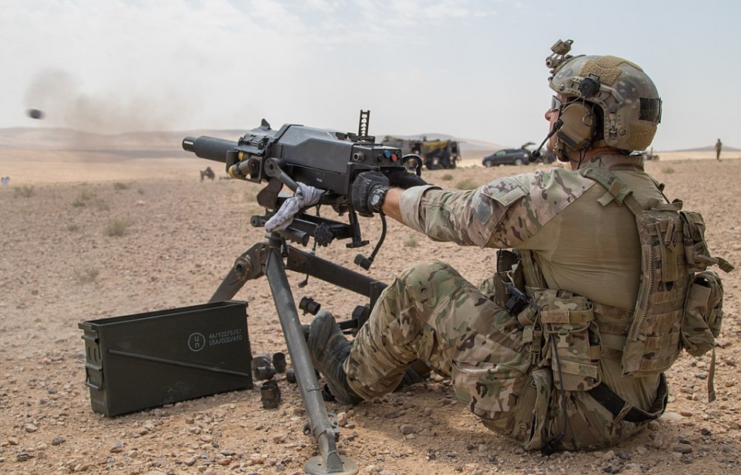
The US Army is the primary operator of the Mk 47 Striker, with approximately 1,500 in use. The service’s infantry continues to equip the Mk 19, while the US Special Operations Command (USSOCOM) began using the Mk 47 in 2006.
With American Special Forces units, the Mk 47 has seen service in both Iraq and Afghanistan. More recently, the USSOCOM has operated with the Mk 47 in Syria, as part of the Syrian Civil War.
Service with other countries’ military forces
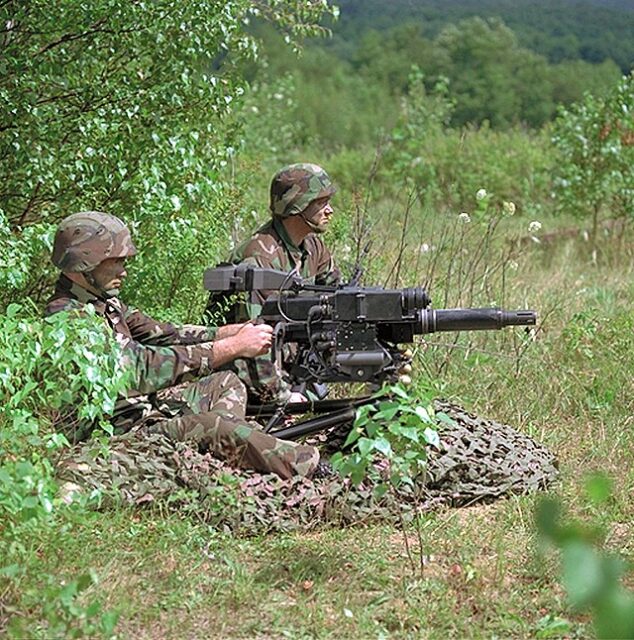
In 2010, the Israel Defense Forces signed a $24.9 million contract for 130 Mk 47 Strikers, to replace their inventory of aging Mk 19s. The Australian Defence Force also signed a $47 million contract for 200 Light Weight Automatic Grenade Launchers, which were fitted with the Lightweight Video Sight, as well as color video and thermal imaging.
More from us: Panzerschreck: Germany’s Much More Powerful Version of the American Bazooka
The Mk 47 was designed with longevity in mind. Similar to its predecessor, the grenade launcher will be at the forefront of technology for the foreseeable future.
